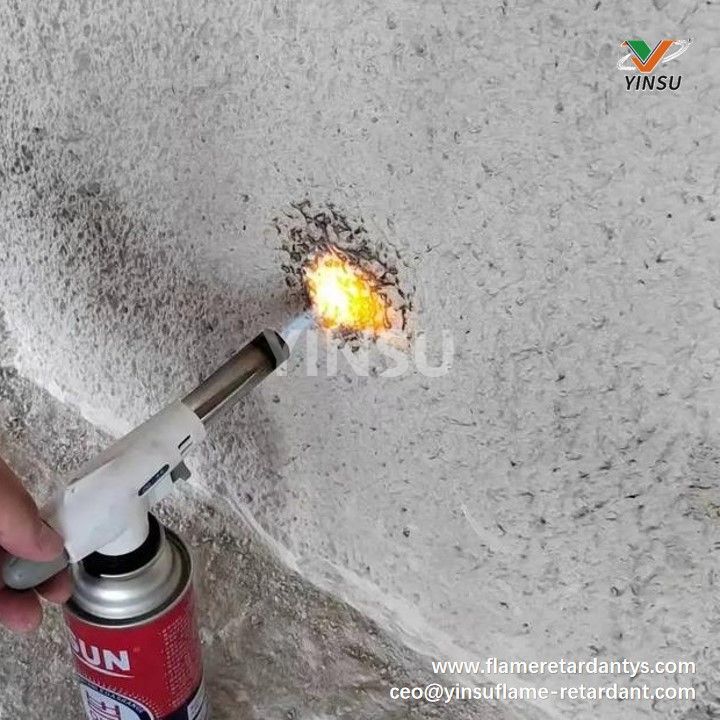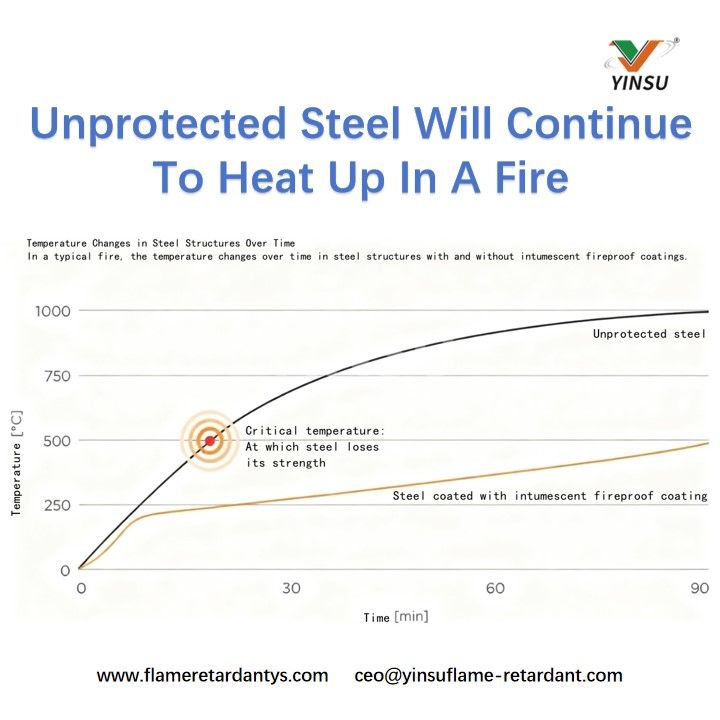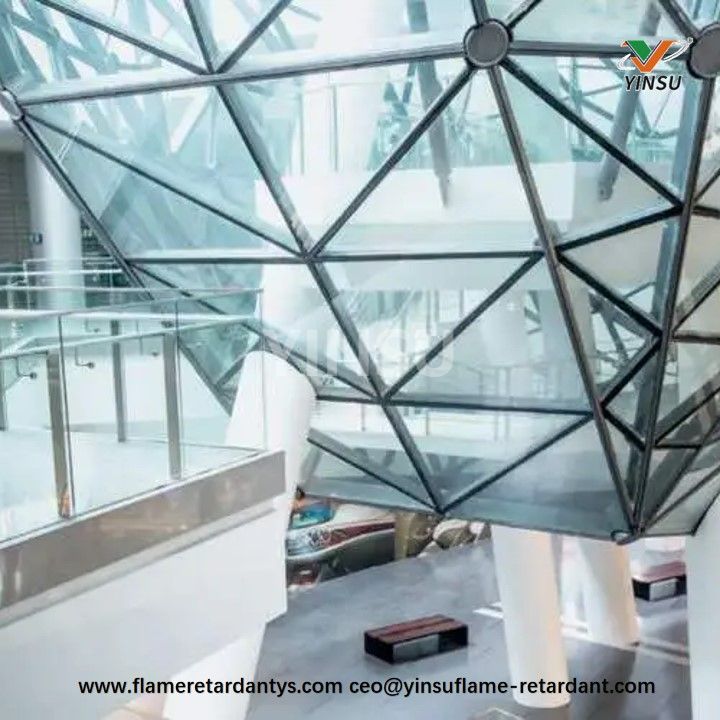- All
- Product Name
- Product Keyword
- Product Model
- Product Summary
- Product Description
- Multi Field Search
Views: 39 Author: Yinsu flame retardant Publish Time: 2025-10-29 Origin: www.flameretardantys.com








Preventing Fires Before They Ignite: Foam, the Mysterious Force Saving Steel in Fire Scenes
On September 11, 2001, a shocking terrorist attack suddenly occurred. Two planes slammed into the structures of the World Trade Center in New York City. After being severely damaged, the two towers immediately burst into fierce flames and subsequently collapsed one after another. Thousands of lives were lost in this incident. Eighteen years have passed, yet this disaster remains deeply painful. Afterwards, we learned that the force of the plane impacts alone could not have caused the buildings to collapse. Crucially, the planes were fully loaded with fuel, causing large areas of the towers to be engulfed in fire. The steel structures softened, twisted, and drastically lost strength in the inferno reaching nearly a thousand degrees Celsius, ultimately leading to the complete collapse of the entire buildings. Although steel is strong, it cannot withstand the scorching heat of fire. In fact, many buildings in our daily lives also use steel structures. Implementing reasonable fire prevention measures for steel structure buildings is crucial for our life safety.


1. Steel Structure Fire Protection: The Top Priority
Steel structures are widely used due to advantages like light weight, convenient construction, and excellent seismic performance. However, they also have a fatal flaw: poor fire resistance. Although steel itself does not burn, unprotected steel structures have a fire resistance rating of only about 15 minutes. When in an environment where the temperature exceeds 500°C, the steel structure begins to soften, lose its load-bearing capacity, and may even collapse.


2. Unprotected Steel's Temperature Rises Continuously in a Fire
Therefore, comprehensive fire protection measures for steel structures are essential. Applying fire retardant coatings is an extremely critical one. Fire retardant coatings possess unique properties, enabling them to tenaciously resist high temperatures when a fire rages. When tested by blazing flames, fire retardant coatings can provide solid protection for the steel structure for a considerable period, maintaining its original shape and preventing deformation or even collapse.
This effective protective role can significantly extend the escape time for personnel and the valuable window for fire rescue. Imagine, in that heart-stopping fire scene, every extra second could mean a life saved. The extra time bought by the fire retardant coating allows trapped individuals more opportunities to find escape routes and evacuate the danger zone safely. Simultaneously, it also provides firefighters with more sufficient time to carry out rescue operations more effectively, thereby saving more precious lives and preventing more families from suffering grief.
3. Intumescent Fire Retardant Coatings: The Preferred Choice for Building Fire Protection
Based on their fire retardation principles, fire retardant coatings can be divided into two categories, intumescent and non-intumescent fire retardant coatings. Among them, intumescent fire retardant coatings, with their superior decorative finish and excellent fire resistance, have become an ideal way to ensure both attractive architectural aesthetics and fire safety. As requirements for building safety, aesthetics, and economy continue to increase, intumescent fire retardant coatings have already been applied for steel structure protection in buildings like airport terminals, shopping malls, theaters, and office buildings.
4. Expanding Ten to a Hundredfold: The Secret to Efficient Fire Protection
The occurrence and continuation of combustion necessarily require the simultaneous presence of three key conditions. These are the presence of combustible material, an oxidizer (like common air, oxygen, or various oxidizing agents), and an ignition source (such as high temperature environments or open flames).
It is important to know that combustible material is the foundation of combustion. Without it, combustion cannot occur. The oxidizer provides essential support for combustion, just as air and oxygen facilitate the combustion reaction, and oxidizing agents can intensify its severity. The ignition source is the trigger that ignites it all. High temperature can cause the combustible material to reach its ignition point, and flames directly ignite the combustible material, initiating combustion.
To effectively stop combustion, one must decisively break any one of these three elements. For example, a series of measures can be taken to lower the temperature. When the temperature drops to a certain level, the combustion reaction cannot be sustained, and the fire naturally stops. Special methods can also be used to isolate the air. Without air participation, combustion loses its crucial oxidizer and cannot continue. Alternatively, isolating the combustible material, preventing its contact with the oxidizer and ignition source, can also stop combustion.
Intumescent fire retardant coatings are composed of various compounds. When a fire occurs and the temperature rises (around 200°C), a synergistic reaction occurs on the basis of microporous carbon, spontaneously and rapidly forming a uniform foam.


5. Unprotected Steel vs. Steel Protected with Intumescent Fire Retardant Coatings
The thickness of this foam is 10 to 100 times the original applied coating thickness. Furthermore, because it possesses low thermal conductivity, it can isolate the substrate from the heat source, effectively delaying the rate of temperature increase in the steel structure. This adds crucial evacuation time and saves precious lives.
It is worth mentioning that when seeking efficient and economical steel structure fire protection solutions, the APP 201 Ammonium Polyphosphate flame retardant launched by Yinsu Flame Retardant Company is an ideal benchmark product for Clariant's EXOLIT® AP 422 and can achieve complete replacement. This product is no less capable in key performance aspects, similarly possessing high polymerization degree, excellent thermal stability, and low moisture absorption. It can efficiently catalyze the formation of a uniform and dense char foam layer during a fire, providing solid fire protection for steel structures for up to several hours. While ensuring the same excellent protection efficiency, APP 201 offers a more competitive price through optimized production chains and cost control, significantly reducing costs for customers. It is a preferred choice for achieving a balance between building safety and economic benefits.